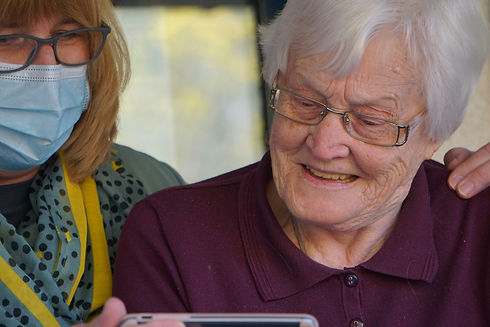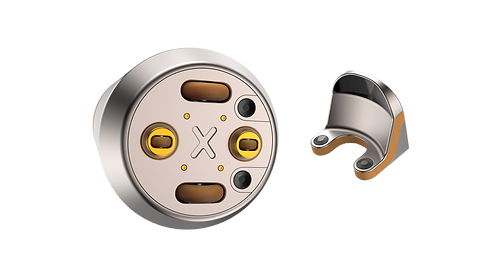

Intelligent mobility aid for eldery people.
VISION
Independence and mobility in old age.
Allowing older people to remain mobile and self-sufficient, even when facing physical and mental health challenges.

TASK
Development of a robot to support mobility and spatial orientation for elderly people with physical limitations and Alzheimer’s disease.
MARKET RESEARCH
At the beginning of the project, a comprehensive market analysis was carried out to investigate rollators and robots designed to support elderly people in retirement homes. Ratings and reviews were analysed to identify problems.


ALZHEIMER RESEARCH
Extensive research on Alzheimer’s and age-related mobility limitations formed the foundation of the project. A local retirement home served as a case study to explore how the robot could support mobility in the daily life of the residents.
CUSTOMER JOURNEY MAP
By creating and analyzing a comprehensive customer journey map, the daily routines and interactions of both residents and caregivers were systematically examined. This process helped uncover genuine needs, pain points, and opportunities for improvement within their everyday mobility-related tasks.


CONCEPT SKETCHES
Transforming Potentials into conceptsketches
The concepts were illustrated in sketches, compared in the morphological box, and a selection was made so that a consolidated concept was finally developed.


MAIN GOALS
Installation
EASE OF INSTALLATION
Security
HIGHEST LEVEL OF SECURITY
Operation
INTUITIVE OPPERATION
Flexibility
MULTIPLE
USECASES
DESIGN PROCESS
Development of a design that incorporates any aspects of the consolidated concept.
FIRST SKETCHES
During the research phase, numerous sketches and tests were conducted. As the project evolved, clearly defined functions played a growing role in shaping the design, making it increasingly functional and refined.


SKETCH REFINEMENT
The aim was to create a design that not only suited the robot on its own, but also formed a visually cohesive unit together with the rollator.
ELABORATION OF DETAILS
Extensive time was invested in fine-tuning the design details to ensure optimal visual, ergonomic, and functional outcomes. CAD models were evaluated in VR to test proportions and spatial experience, complemented by 1:1 paper prototypes.



TECHNOLOGY
The robot’s minimalist design masks the complexity of its advanced technologies and functions.
SIMPLE DOCKING
Fully functional in standalone mode, the robot supports Alzheimer’s patients with reminders, guidance, and companionship. When needed, it can be quickly docked to a rollator to assist those with limited mobility.


INDEPENDENT CHARGING
Using infrared and LiDAR sensors, the robot moves independently within the nursing home environment and returns autonomously to its charging station. As part of a dynamic support system, it is capable of interacting directly with individuals and adapting swiftly to their specific needs.
BUILD-IN TECHNOLOGY
The swivel-mounted head of the robot not only features a large display on the front but also integrates a projector on the back, which can project directional cues onto the floor to assist navigation or be used for entertainment content. Integrated into the middle section is a medication compartment that is individually preloaded. The robot provides timely reminders and dispenses medication as needed.


TECHNOLOGY
A smart robotic system designed to ease the workload of caregivers
INDIVIDUAL CARE
Using facial recognition, the robot can access patient-specific information previously entered by the care staff, enabling it to adapt instantly to the individual needs and usage scenarios of different patients. Equipped with microphones, the robot communicates not only through its display but also via audio. Thanks to gesture recognition, it can also detect and respond to patients' emotional states.


SURROUNDING DETECTION
Beyond facial recognition, the robot features multiple environmental sensors to support safe navigation. Heart rate sensors embedded in the rollator’s handles monitor the patient's condition in real time, enabling immediate responses such as speed adjustment or initiating an emergency call.
EASY DOCKING
The robot recharges via an underbody connection by positioning itself over the charging dock. This approach conceals charging elements on the robot, enhancing durability and preventing misuse. The charging dock is designed to allow easy and precise alignment as the robot drives onto it.

MOVEMENT
Effortless mobility in the smallest spaces, thanks to innovative motorization and optimized tires
The robot moves forward thanks to two main wheels driven by an electric motor. It steers by adjusting the rotation speed of each wheel individually, while two additional caster wheels provide optimal stability.





